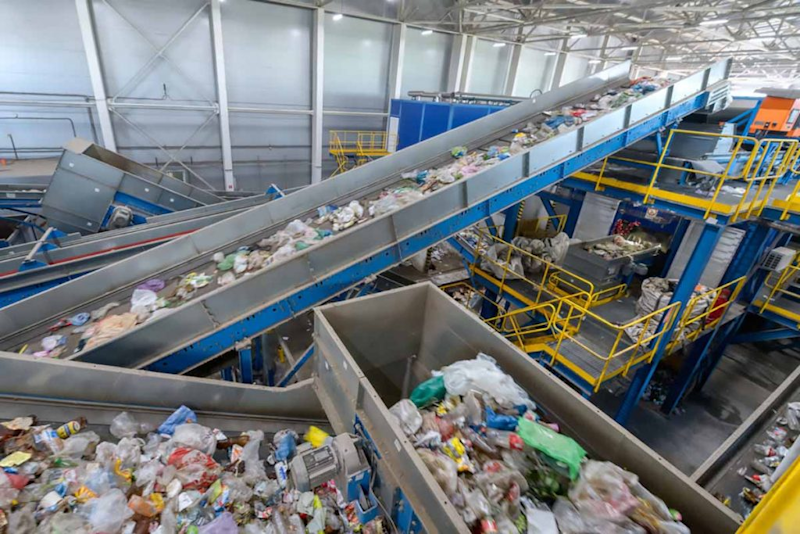
When it comes to waste management, Alabama is a state of natural beauty and diversity.
Landfills are a key part of the waste management system in Alabama, receiving municipal solid waste (MSW), construction and demolition (C&D) debris, and industrial byproducts. The state’s wide-open spaces and lower-than-average population density have made landfills a practical answer for where to put waste, but there are environmental, regulatory and social concerns that need to be managed.
Summary of Landfills in Alabama
More than 30 active landfills can be found in Alabama, each type being differentiated by the kind of waste they accept:
- Municipal Solid Waste Landfills: These facilities handle waste generated by households and commercial businesses, making up the bulk of the state’s waste stream
- Construction and Demolition Landfills: Alabama’s growth means there are plenty of construction sites, so these landfills handle debris from buildings and infrastructure
- Industrial Landfills: The automotive manufacturing and pulp and paper industries are examples of industrial facilities that produce large amounts of waste that require industrial landfills
- Groundwater Pollution: Alabama’s drinking water and agriculture depend on groundwater. If not carefully managed, the leachate, a liquid that builds as waste decomposes, can cause a serious threat. Modern landfills are required to include liners and leachate collection systems, but risks may still exist at older or unregulated sites
- Methane Emissions: By allowing organic waste to decompose in landfills, methane — a potent greenhouse gas — is generated. Some larger landfills in Alabama capture and use methane as an energy source, but most facilities don’t do this, helping fuel climate change and air pollution
- Impact on Wildlife and Ecosystems: Alabama has rich biodiversity, with multiple endangered species. If not well maintained, landfills can throw ecosystems out of balance, lure in pests, and affect local flora and fauna
- Soon after, in the 1970s, landfills started being regulated, requiring liners, leachate management systems, and monitoring wells to prevent contamination
- Permit and Licensing: Landfill operators must secure permitting and follow specific operational protocol
- Monitoring After Closing: Most closed landfills need to be monitored for decades before it is safe
- Growing Waste Generation: Population growth, urbanization, and industrial development will drive the demand for landfills
- Recycling and Composting: Enhanced recycling initiatives and composting infrastructure investments have the potential to alleviate landfill pressures. Public education campaigns can further support involvement in waste diversion programs
- Technological Innovations: Advanced sorting technologies, waste-to-energy systems, and anaerobic digestion provide opportunities for diverting materials from landfills and producing renewable energy
- Climate Resilience: Landfills should be designed and operated to respond to extreme weather events, like intense rain and flooding, that may affect containment
-
Alabama has many inactive or closed landfills, especially in rural areas, in addition to active sites. Some older landfills were created before modern environmental regulations existed, and need monitoring to mitigate the risk of potential contamination.
As the population and prosperity increased, the generated waste trends matched.
Alabama produces about 8.5 million tons of waste a year. Most of this waste ends up in a landfill, sometimes through waste treatment stations, while recycling and composting make up only around 20% of the waste stream. A recycling rate of 32% is considered the national average, indicating there is still work to be done to divert waste away from landfills.
Alabama is home to not just in-state waste, with landfills that accept out-of-state waste. Lower tipping fees and lots of landfill capacity make Alabama a destination of choice for out-of-state trash, especially neighboring states Georgia and Tennessee. This practice has sparked controversy among environmental advocates and residents.
Alabama Environmental Concerns
Alabama’s landfills face multiple environmental issues:
Regulatory Oversight
Landfills are regulated by the Alabama Department of Environmental Management (ADEM) and must meet state and federal environmental laws. Key regulations include:
Even with these regulations, though, enforcement can be spotty from state to state, and some communities have expressed concerns about lax oversight and transparency, especially with regard to facilities that accepted out-of-state waste.
Economic and Social Impacts
Landfills help Alabama’s economy by creating jobs and earning revenue through tipping fees. Some landfills leverage their environmental impact further by acting as renewable energy sites, as seen in landfill gas-to-energy efforts that convert trapped methane into electricity.
But landfills also have social problems, such as odor and Aesthetic Issues: Neighboring communities frequently suffer offensive odors, noise pollution and reduced property values; and environmental justice, as landfills are often located in close proximity to low-income or minority communities, leading to concerns around siting practices and disproportionate effects on vulnerable populations.
Challenges Ahead and Opportunities in Waste Management
As Alabama expands, so do its waste management demands. There are many challenges and opportunities ahead:
systems.
Broader policy reform and public dialogue will be necessary to balance the economic benefits of waste imports with environmental sustainability and community concerns.
Landfills play a vital role in Alabama’s waste disposal system, handling millions of tons of waste every year.
Although the state is blessed with lots of land and low costs, there remain many challenges around pollution impacts, better dumpster rental services, low recycling levels and social equity. Through investment in recycling programs, embracing new technologies, and enforcing meaningful regulations, Alabama will be able to improve its waste management and protect its natural resources for the benefit of the next generation.


 Pollution has been an important vector in the acceleration of the spread of the coronavirus in Italy, reports a study. Fine particles not only play the role of transporter for the virus, which calls into question the safety distance of one meter, but they weaken vulnerable people and worsen the symptoms of Covid-19.
Pollution has been an important vector in the acceleration of the spread of the coronavirus in Italy, reports a study. Fine particles not only play the role of transporter for the virus, which calls into question the safety distance of one meter, but they weaken vulnerable people and worsen the symptoms of Covid-19.